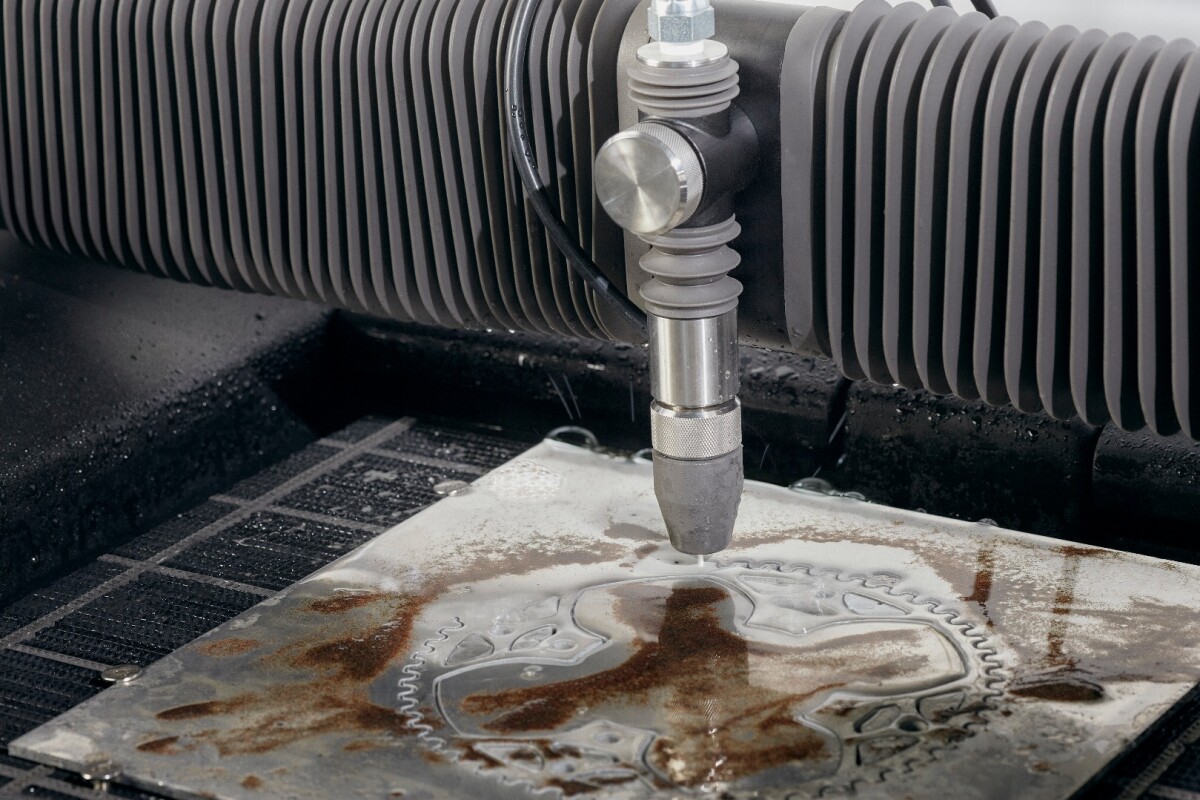Waterjet cutting is a proven method for creating intricate and precise cuts with nearly any kind of material, although the machines are big and expensive. Wazer is out to change that with the first desktop waterjet that can cut nearly any hard or soft material with a precision similar to larger, more expensive systems, but at less cost.
Created by a group of University of Pennsylvania graduates, Wazer appears to be fairly simple to use.
You plug the Wazer unit into a laptop with a USB cable so it can access standard drawing .svg or .dxf files, place the material on the cutting platform, set the height of the cutting jet, hook up the water supply, fill up the abrasion tank, and let the system go to work.

The unit's jet uses a combination of high-pressure water and sand-like abrasive particles made from crushed garnet to cut through materials like steel, titanium, aluminum, glass, stone, tile and carbon fiber. The company says the Wazer can make a cut approximately 1/16 of an inch (1.5 mm) in width.
To give some cost comparison, industrial-sized waterjet cutters can cost nearly US$200,000 with some companies making them available for an hourly rental fee of $100 and up. Wazer has set a list price of $5,999 for its unit, once the company goes into full production late next year.

Wazer's creators say they were able to get the size and cost of their unit down by reducing the water cutting pressure. This evidently doesn't affect the precision of the cuts or the varied type of materials the Wazer can be used on, but it does slow the cutting time. Makers, designers and hobbyists may find that to be a worthwhile trade-off considering the advantages provided by access to a cutting tool that would normally be far more expensive to use.
Wazer launched a Kickstarter campaign on September 12 and has already reached over $600,000 in pledges with a goal of raising $100,000. Early backers have claimed the first 30 units priced at $3,499, but there are units available at $3,599 and $4,499. The company says it will only be able to ship to the United States and Canada, with finished units to begin shipping in August 2017 if all goes as planned.
Take a look at the following video, to see how the Wazer works.
Sources: Wazer, Kickstarter





















